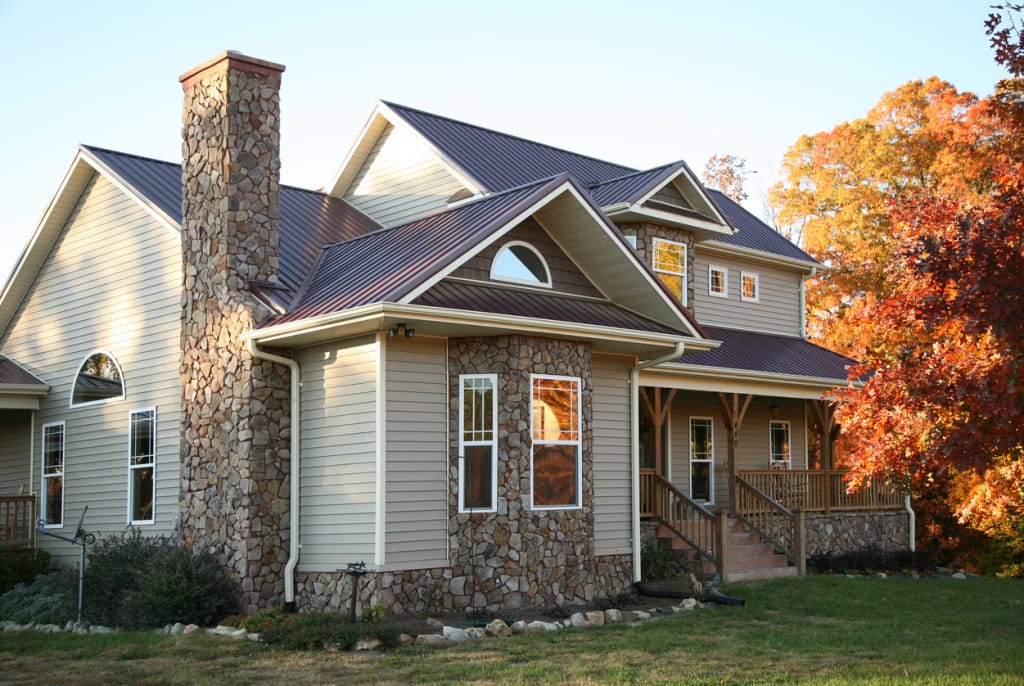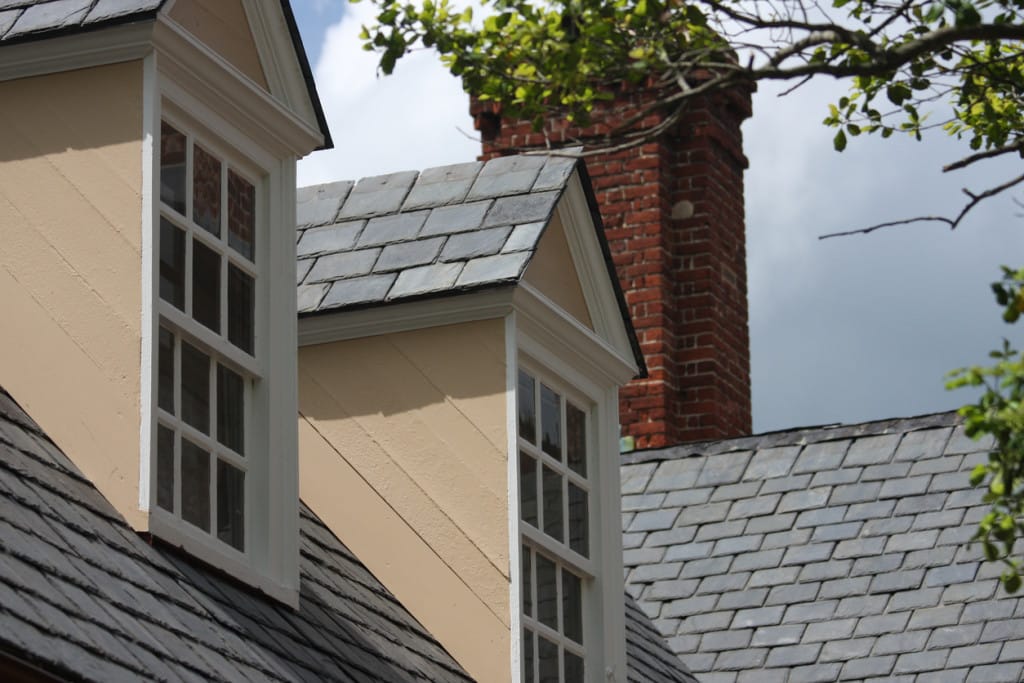The Four Most Common Types of Roof Materials
Have you given any thought to your roof materials lately? If you’re like most homeowners, you probably haven’t. It’s one area of your house that’s almost always out of sight and usually out of mind. And then one day it starts to leak, and suddenly you realize just how important it is. First of all, it keeps its inhabitants and their possessions warm and dry, and when you finally pay attention to it, you notice that it also makes a valuable contribution to the overall appearance of your house.
So, when it’s time for a roof replacement, a roof for a new house, or a new roof for an addition to your present home, there are several options you’ll need to consider. Among them are the type of roof materials and the color. As far as color, those aesthetic decisions are best left to the design experts. Roofing materials, on the other hand, can be more easily quantified to make the decision manageable.
Even though various components–framing, preparation, proper installation, and materials–work together to compose your roof, its shingles are certainly the most visible and are arguably the most important of these. Choosing the right roof material is important and is a matter of evaluating each of its attributes, such as price, durability, and style. Here is the rundown on the four most common types of roof materials to help you make an informed decision:
Asphalt shingles top the list
Asphalt shingles have been and still are the most popular choice. They appeal to the cost-conscious homeowner because they provide a durable roof for less than any other type of roof material ($150 to $200 per square). There are two types of asphalt shingles: fiberglass and organic.
Fiberglass: These shingles consist of a fiberglass mat that’s covered with asphalt, which keeps water out and protects the other roof components and the interior of your home. The ceramic granules that top the asphalt act to reflect UV rays.
Organic: These shingles appeal to the environmentally-conscious homeowner and are usually manufactured from recycled felt paper. They too have a layer of asphalt to make them waterproof. Organic shingles tend to be more durable than fiberglass, but they are also more expensive.
Choose metal for durability
While asphalt shingles remain the most popular choice of roof materials, residential metal roofing is catching up, more than quadrupling its market share over the past ten years. The reason: today’s metal roofs give homeowners the option to upgrade their homes with material that has lasting value—fifty or more years of value! Some of the other benefits that appeal to homeowners include:
- Fire resistance
- Panels that interlock for wind resistance
- Energy efficiency
- Low weight
- Styles to match almost any home
Even though the pros of metal roofing clearly outweigh the cons, there are drawbacks that you should consider. The biggest is the initial cost ($700 to $1000 per 100 square feet), but that is only a negative if you move soon after installation and don’t get the return on your investment. The other possible downside, noise, may be romantic and soothing for some, while others will find it irritating.
The elegance of slate
Many of this country’s old and stately houses display slate tiles on their roofs. Known for its beauty and durability, this stone roofing is one of the longest lasting shingles on the market today. Nonetheless, like any other roofing material, it has disadvantages that accompany its benefits.
The biggest advantage to a slate roof is its appearance. The tiles are 100% natural stone and have a naturally cleft surface that shows color variation across its entire surface. These tiles are durable, often lasting longer than the building they cover. They are also fireproof, recyclable, and energy efficient.
On the other side of the coin are the expense ($1000 to $6000 per square) and the difficulty of installation. Inexperienced roofing contractors trying to install slate tiles like asphalt will run into trouble very quickly. Also keep in mind that slate roof tiles are very heavy, and the roof deck will need to be reinforced to hold the weight.
The natural, rustic look of wood
For hundreds of years, wood shingles and shakes have been the top choice for roof materials. They are beautiful initially before weathering to an attractive shade of gray eventually. Today’s homeowners appreciate that it’s a natural product typically made from southern pine, cedar, and redwood.
Unfortunately, cedar shakes are a potential fire risk. For this reason, some municipalities in fire-prone areas do not allow them, and some homeowners’ insurance providers charge a higher premium if you install them. There is a fire-resistant coating that can be used to treat wood shingles, but it must be re-applied every few years.
On the plus side, wood shingles and shakes are fairly easy to install and maintain. They are durable, lasting between twenty and thirty years, and are resistant to insect activity. Cedar shakes also have natural insulating properties, and they are installed at $700 to $1200 per square. Wood shingles typically cost slightly less.
There are other options for roof materials
While these four roof types are the most popular, they are not your only choices. You can choose any of the following to match your unique taste:
- Clay tile
- Synthetic slate
- Concrete tile
- Flat roof systems that include:
- EDPM rubber
- PVC
- TPO roofing membrane
- Modified bitumen
Turn to the pros
There are many do-it-yourself jobs around the house waiting for your attention, but replacing your roof is probably not among them. Updating your existing roof can add value to your home while communicating its look and feel. Your roof is important, and there are many roof materials. The material you choose for it can bring the exterior of your house to the next level. It’s also critical that it is installed properly—a job best done by professionals.


